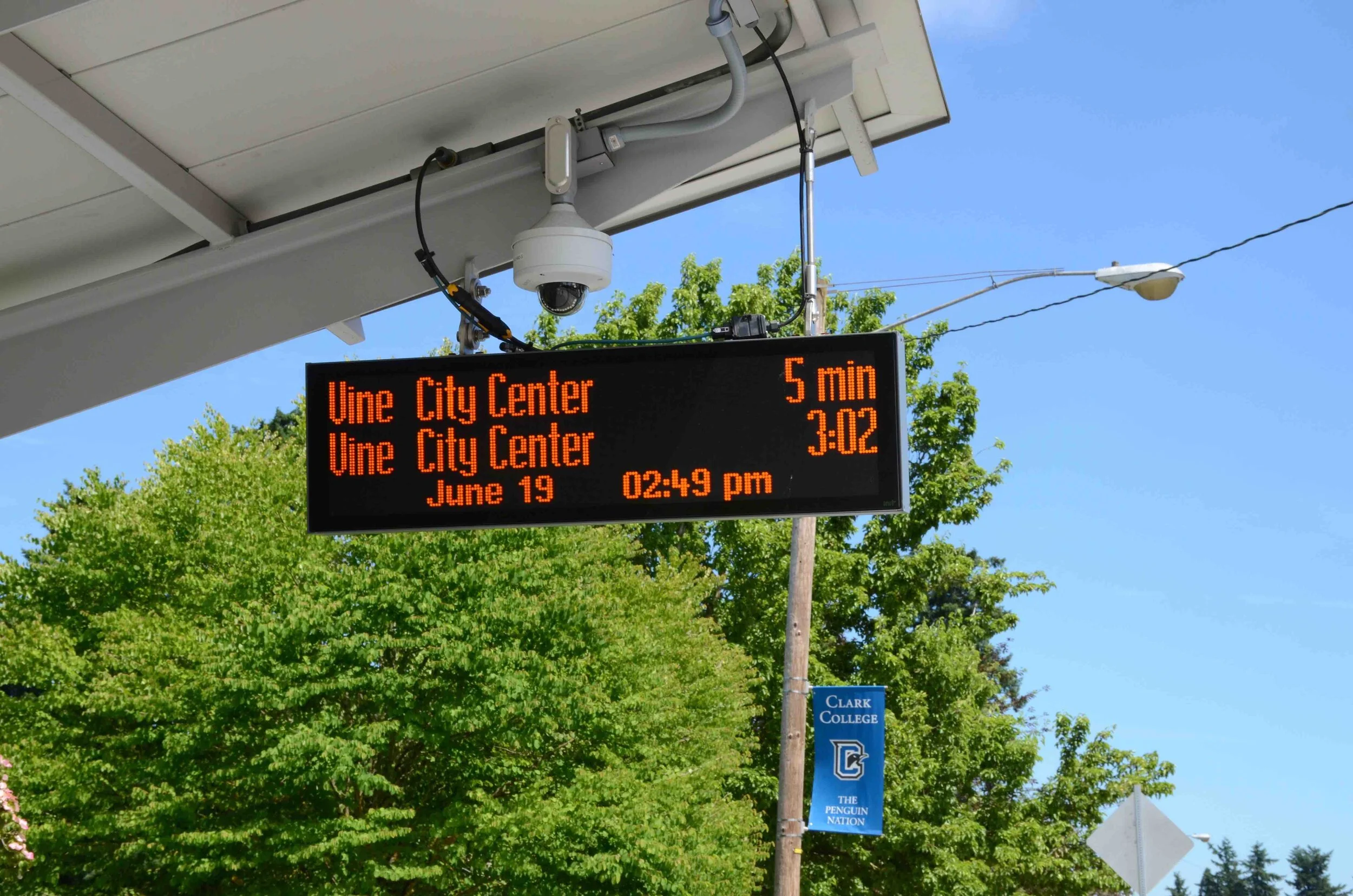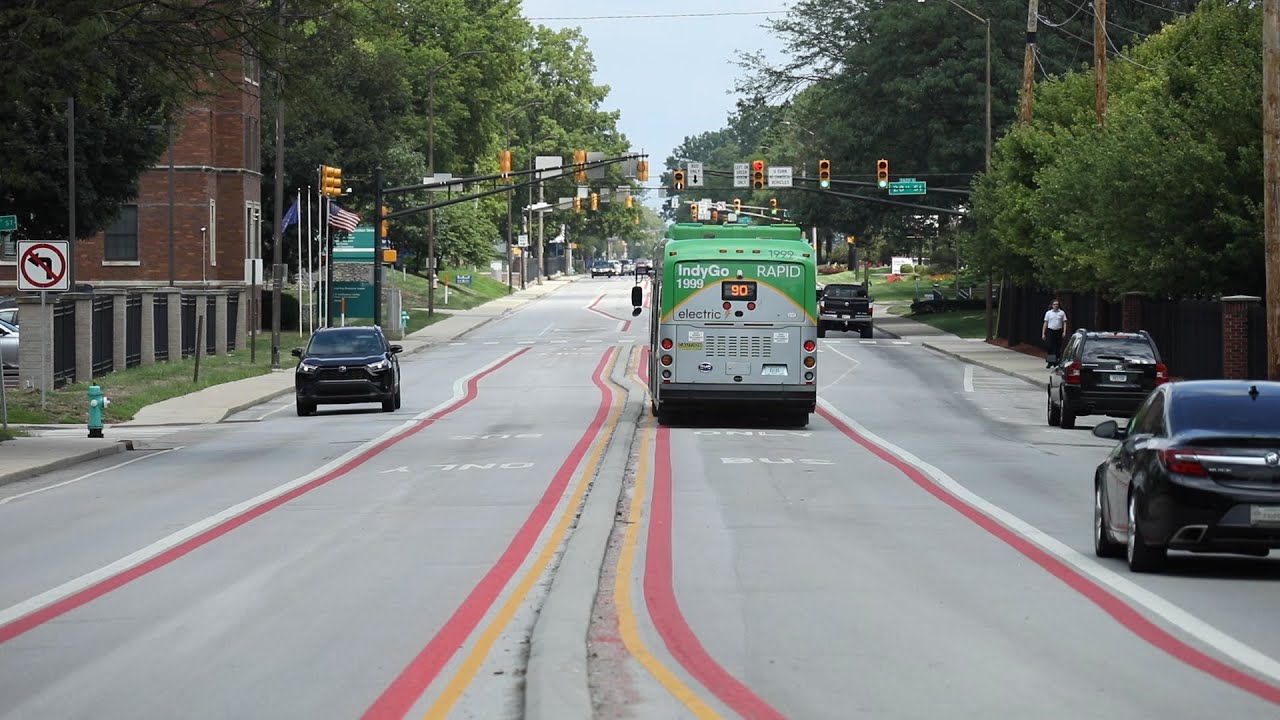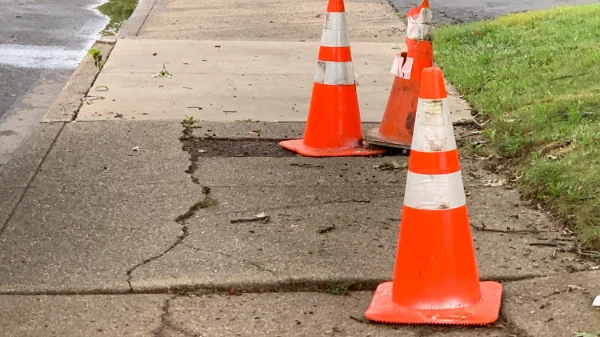Transit investment in the U.S. may be dominated by a relative handful of high-profile, very expensive rail lines, but some of the most exciting developments in public transportation anywhere on the North American continent are happening in far more under-the-radar places. These improvements are a testament to what you can do with limited resources and a less conducive environment, which forces you to think strategically and take high-returning incremental steps.
The latest success story in the making might be Indianapolis, where transit system IndyGo has opened the Red Line all-electric bus rapid transit route, connecting downtown Indy along a north-south spine to the popular Broad Ripple neighborhood. Transit guru Jarrett Walker, of whom we're big fans, was a consultant on the project. Governing called it "the bus system of the future." Noted urban scholar and Indiana native Aaron Renn had this high praise for it recently:
Indianapolis Red Line BRT line is major step up for the city. It's already a completely useful route on par (and in some ways better) than buses in Chicago or NYC.
Indianapolis isn't doing anything novel or innovative, is the thing. What's noteworthy is that it's one of the most car-centric metros in America. About 82% of residents drive alone to work, and only 2% regularly commute by public transit. And no wonder: transit service was abysmal until recently. Total daily bus ridership, system-wide, was 33,000 in 2016, less than the number of riders on a single light rail line in Minneapolis-St. Paul (hardly a transit mecca itself). So when Indy voters approved $54 million a year in new income taxes in 2017 to improve transit, it had to be spent smart to deliver real results, and to show a skeptical populace what was possible.
Indy transit is a work in progress. But here are three things IndyGo seems to be doing right, and other cities it has learned from.
1. Focus on actually making it useful.

Most American cities have long taken the approach that transit is a bare-minimum social service for the needy, not a broad-based public good like parks or streets. This mindset leads to prioritizing making sure that transit simply exists everywhere that poor or potentially car-less residents live, even if it's so far below a bare minimum standard of acceptability as to be almost useless.
Anyone who has actually taken the time to understand transit from the mindset of a transit user knows that these three words must be the mantra:
Frequency, frequency, frequency.
Jarrett Walker has a memorable analogy for drivers: Imagine there's a gate at the foot of your driveway. That gate only opens once every half hour for about 20 seconds, and you have no control over it. Infuriated yet? This is the experience of daily bus riders in most U.S. cities, compounded by the hellish experience of trying to make a transfer between two lines that run every 30 or 60 minutes.
IndyGo has made the wise move to focus on high-quality, frequent service on a smaller number of routes, instead of sheer coverage (making sure there's a bus stop near as many people as possible). The Red Line's distinguishing feature is that it's a genuinely useful way to travel for people along the route.
Of course, many people aren't on the route. But if you want a world-class transit system, you have to start somewhere, and that somewhere should be truly high-quality service in places where there's plenty of existing demand, as a proof of concept and a foundation to build from.
Precedent: Houston, Texas.
2. Make buses feel more like trains.

Some of the best things you can do to improve bus service are relatively small, and IndyGo has checked all these boxes with its Red Line. Level boarding without stairs reduces delays, especially when disabled people need to get on and off. So does letting passengers pay their fare in advance and get on and off the bus through any door. Light-rail-like boarding platforms with ticket vending machines, heating and protection from the elements improve the dignity of the bus experience.
Dedicated lanes are the gold standard for bus rapid transit. But even if you can't take that step right away, you can do the others. Give your buses the ability to pre-empt traffic signals and get a quick green light at major intersections, and implement the above steps that improve boarding efficiency, and you get much of the experience of rail at a tiny, tiny fraction of the cost.
Minneapolis-St. Paul's Metro Transit has embraced this approach with its aBRT ("arterial bus rapid transit") service, which is not true BRT—buses share the same street lanes with cars—but which feels a lot like riding BRT or even light rail in other respects. It's been a tremendous success, and is a model that cities can afford to repeat over and over and over. Transit expert Christof Spieler calls the first, flagship aBRT line "probably the best bus route in the US." And passengers love it, some even describing it in surveys as just as useful as light rail.
Precedent: Minneapolis-St. Paul, Minnesota
3. Embrace the simplifying power of the grid.
One of the most under-appreciated things about true rapid transit in bigger, denser cities is its legibility. It's easier for a novice to navigate something that has a few lines that connect major destinations in relatively direct ways. Buses, on the other hand, tend to meander and follow counterintuitive routes. Ever had the experience in a strange city of being told to just hop on something called "the 14" or "the 72" and just trust that it will wind its way to where you want to be?
One answer to this is a grid of very frequent routes that run in nearly straight lines along major, known streets or corridors. Even if this means you have to transfer more often to move in a diagonal direction, you will only ever have to do so once, and frequency (every 15 minutes at a bare minimum, but under 10 is better) means it's relatively painless.
Red Line ridership in Indianapolis is underperforming expectations by a little so far, but this is likely due to two factors: one, it opened in the fall, and winter ridership is always lower. And two, there's the fact that the full grid of perpendicular feeder bus lines won't be implemented until next summer.
On Twitter, Strong Indy, a long-running local conversations group of Strong Towns members and supporters in the Indianapolis region, agreed with the work-in-progress analysis and urged patience:
Transit in a truly suburban environment can be excellent and well-used if you focus on a grid of BRT or aBRT lines on major corridors that's easy and fast to navigate.
Precedent: Brampton, Ontario
[[divider]]
Strong Towns members don’t sit back and hope for change. We ask better questions—like what it would really take to make transportation work for everyone—and we act on the answers. Join us.


.webp)


